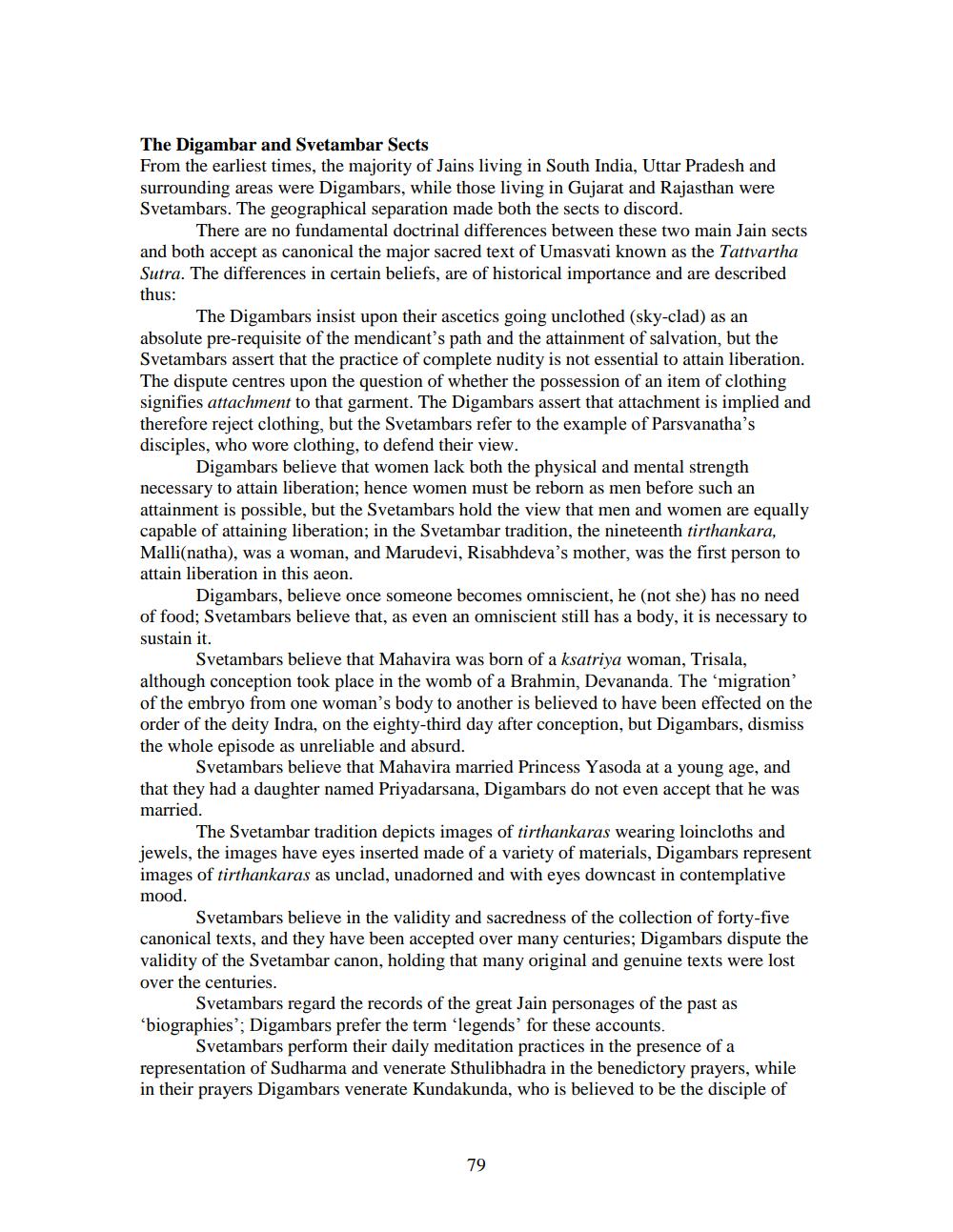________________
The Digambar and Svetambar Sects
From the earliest times, the majority of Jains living in South India, Uttar Pradesh and surrounding areas were Digambars, while those living in Gujarat and Rajasthan were Svetambars. The geographical separation made both the sects to discord.
There are no fundamental doctrinal differences between these two main Jain sects and both accept as canonical the major sacred text of Umasvati known as the Tattvartha Sutra. The differences in certain beliefs, are of historical importance and are described thus:
The Digambars insist upon their ascetics going unclothed (sky-clad) as an absolute pre-requisite of the mendicant's path and the attainment of salvation, but the Svetambars assert that the practice of complete nudity is not essential to attain liberation. The dispute centres upon the question of whether the possession of an item of clothing signifies attachment to that garment. The Digambars assert that attachment is implied and therefore reject clothing, but the Svetambars refer to the example of Parsvanatha's disciples, who wore clothing, to defend their view.
Digambars believe that women lack both the physical and mental strength necessary to attain liberation; hence women must be reborn as men before such an attainment is possible, but the Svetambars hold the view that men and women are equally capable of attaining liberation; in the Svetambar tradition, the nineteenth tirthankara, Malli(natha), was a woman, and Marudevi, Risabhdeva's mother, was the first person to attain liberation in this aeon.
Digambars, believe once someone becomes omniscient, he (not she) has no need of food; Svetambars believe that, as even an omniscient still has a body, it is necessary to sustain it.
Svetambars believe that Mahavira was born of a ksatriya woman, Trisala, although conception took place in the womb of a Brahmin, Devananda. The 'migration' of the embryo from one woman's body to another is believed to have been effected on the order of the deity Indra, on the eighty-third day after conception, but Digambars, dismiss the whole episode as unreliable and absurd.
Svetambars believe that Mahavira married Princess Yasoda at a young age, and that they had a daughter named Priyadarsana, Digambars do not even accept that he was married.
The Svetambar tradition depicts images of tirthankaras wearing loincloths and jewels, the images have eyes inserted made of a variety of materials, Digambars represent images of tirthankaras as unclad, unadorned and with eyes downcast in contemplative mood.
Svetambars believe in the validity and sacredness of the collection of forty-five canonical texts, and they have been accepted over many centuries; Digambars dispute the validity of the Svetambar canon, holding that many original and genuine texts were lost over the centuries.
Svetambars regard the records of the great Jain personages of the past as 'biographies'; Digambars prefer the term 'legends' for these accounts.
Svetambars perform their daily meditation practices in the presence of a representation of Sudharma and venerate Sthulibhadra in the benedictory prayers, while in their prayers Digambars venerate Kundakunda, who is believed to be the disciple of
79




